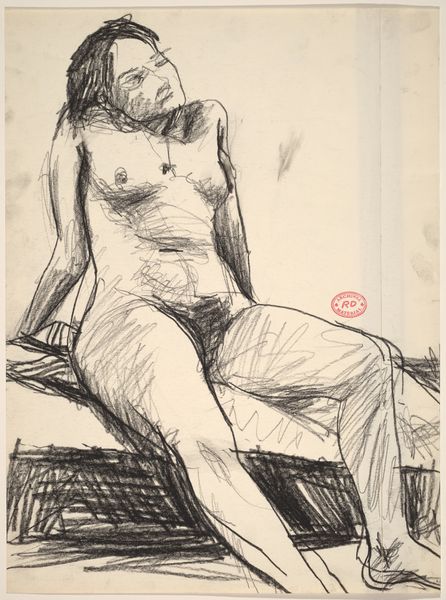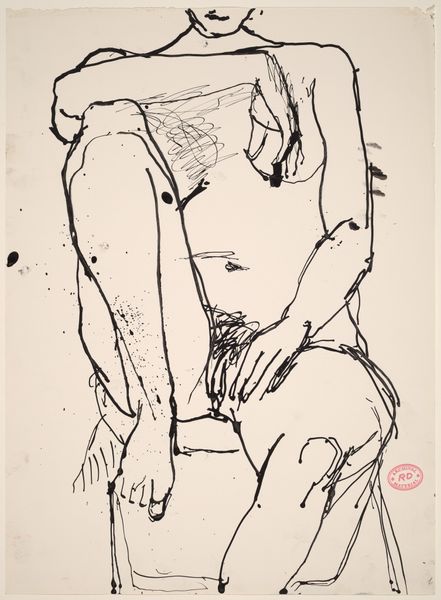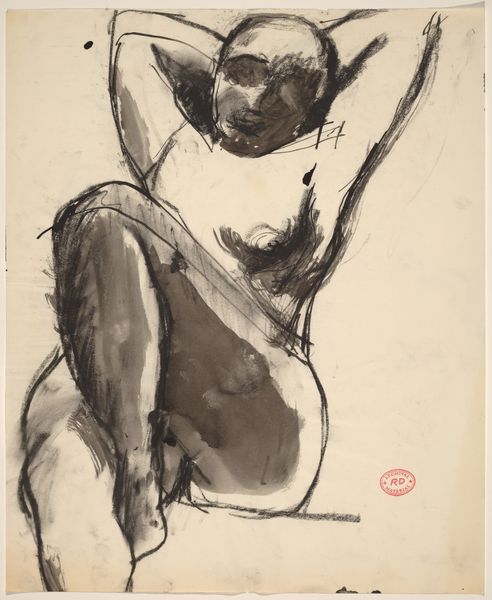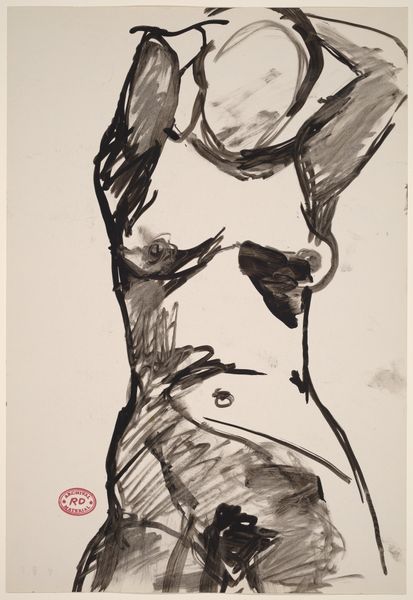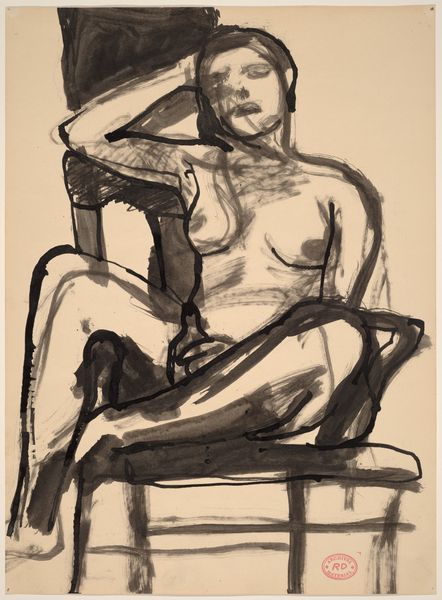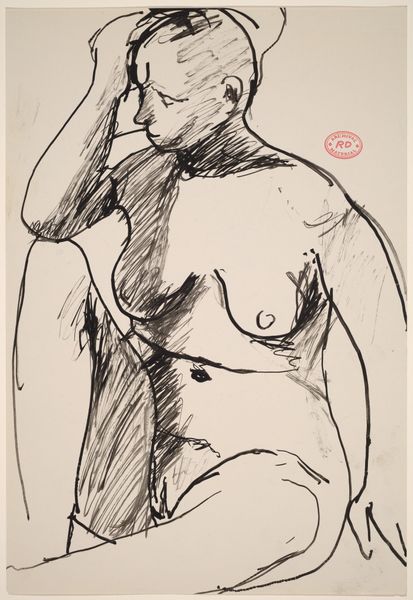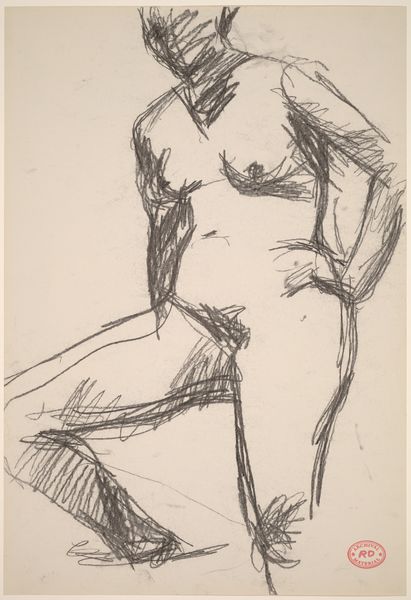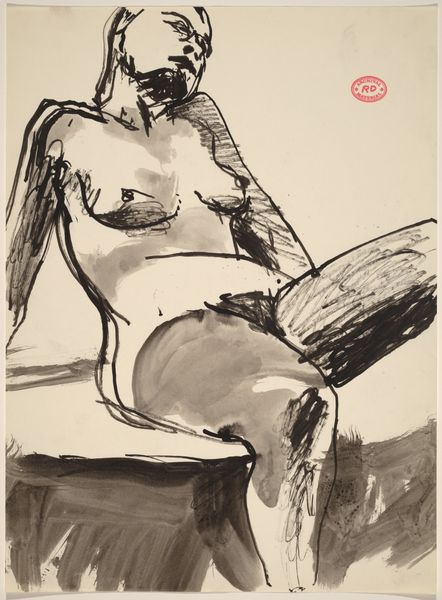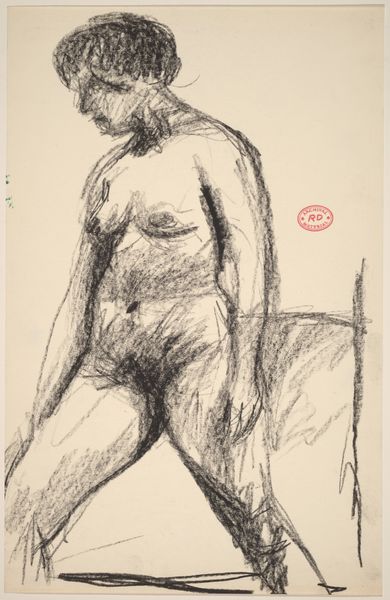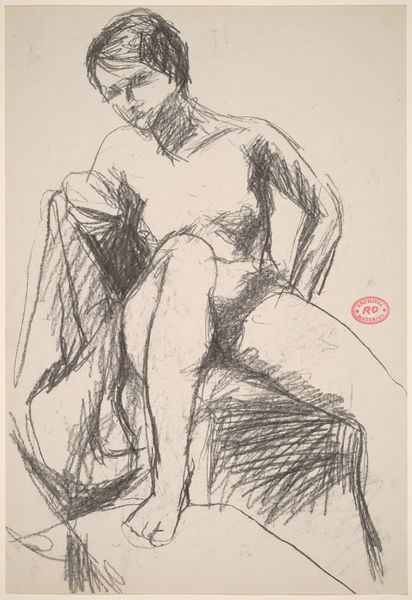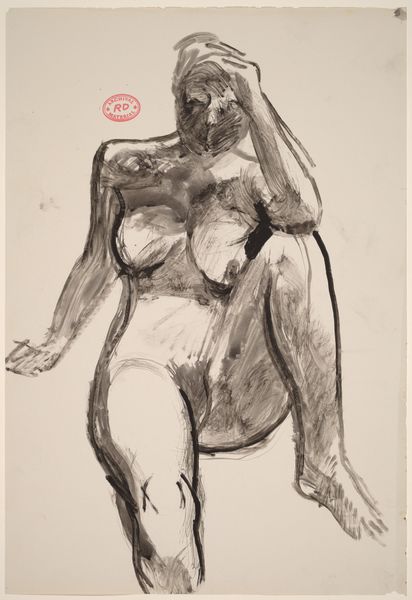![Untitled [nude with her right arm raised] by Richard Diebenkorn](/_next/image?url=https%3A%2F%2Fd2w8kbdekdi1gv.cloudfront.net%2FeyJidWNrZXQiOiAiYXJ0ZXJhLWltYWdlcy1idWNrZXQiLCAia2V5IjogImFydHdvcmtzLzc1Y2Y0MzRhLWFiYWUtNDY3Zi05ZTdkLTNlMjg3ZGNlZDMzYi83NWNmNDM0YS1hYmFlLTQ2N2YtOWU3ZC0zZTI4N2RjZWQzM2JfZnVsbC5qcGciLCAiZWRpdHMiOiB7InJlc2l6ZSI6IHsid2lkdGgiOiAxOTIwLCAiaGVpZ2h0IjogMTkyMCwgImZpdCI6ICJpbnNpZGUifX19&w=3840&q=75)
drawing, ink, pen
#
drawing
#
ink drawing
#
pen sketch
#
pencil sketch
#
figuration
#
bay-area-figurative-movement
#
ink
#
pen
#
nude
#
modernism
Dimensions: overall: 27.9 x 21.6 cm (11 x 8 1/2 in.)
Copyright: National Gallery of Art: CC0 1.0
Curator: It's all in the gesture, isn't it? Look at this unnamed nude by Richard Diebenkorn, estimated to have been created sometime between 1955 and 1967. Just ink on paper, a few flicks of the wrist, but… the whole world contained within those lines. Editor: Immediately I'm struck by the raw, almost frantic quality of the lines. There's a tension here. Look at how much ink he uses in areas versus others to communicate dimension and form. What kind of pen would create these variable effects? Curator: Yes, a controlled frenzy! To consider this… is it raw observation, or something else entirely? Because those pen strokes, they build up a palpable sense of melancholy. Is it a memory being sketched out? An imagined encounter? It feels so intimate, like catching a glimpse of something deeply private. Editor: Exactly. And consider the economics of scarcity: using limited materials like ink and paper allowed Diebenkorn, and others, to iterate different visions. Are we seeing a rapid series of explorations and erasures happening through labor on a fragile substrate? This adds another emotional layer on top of what is captured. Curator: Absolutely. There is a dialogue there, a conversation happening between artist, subject, and the physical materials, paper and ink, pushing their capabilities! Editor: And it seems Diebenkorn does quite a lot with very little! With just those three essential tools—ink, pen, and paper—and the figure study seems to suggest the subject's active role in its creation! Is it collaboration of artist and subject to make such strong, interesting contours with so little materials? Curator: I think we are! Because it transcends the simple representation. It becomes a story, whispered in monochrome. I find that haunting in a way that perfectly encapsulates the modernist spirit. Editor: Yes, absolutely—and speaking of the economy of production... for viewers today, how are these modes of artwork tied to different possibilities afforded by limited resources? What social or political stories of production do you read out of it? Curator: Interesting how this simple, almost casual piece could carry such depth of material context, I agree with that! For me, it’s that invitation into someone's inner world. Editor: Right!
Comments
No comments
Be the first to comment and join the conversation on the ultimate creative platform.
